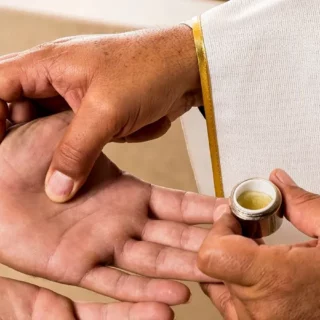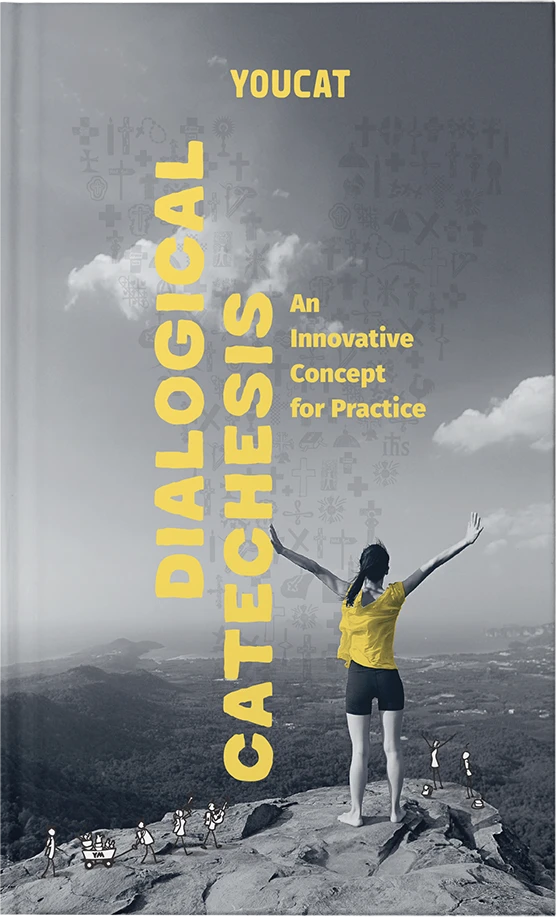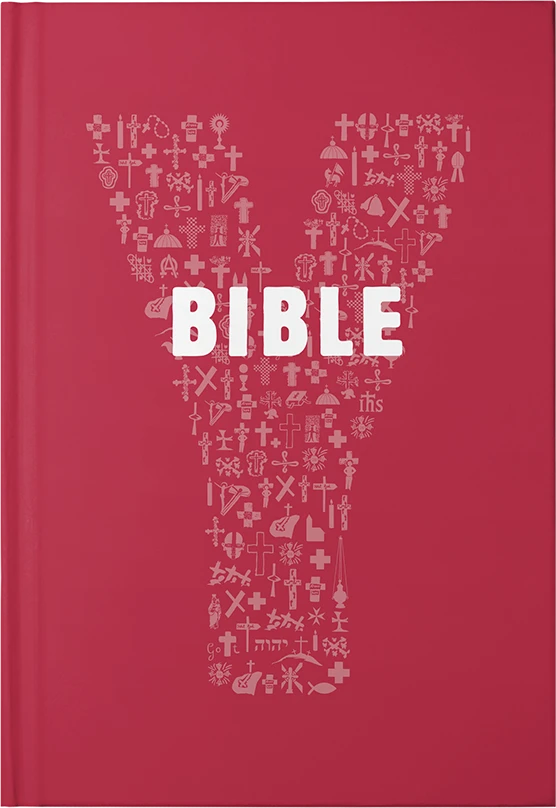

Credopedia
Mother of God
When the Church forgets the mother …
What is that?
To call Mary, a simple woman from Galilee, “Mother of God” or the “God-bearer” (Greek Theotokos) was and is controversial. After the year 200, the word “God-bearer” appears for the first time in a prayer that is still in use today: “Under your protection and umbrella, we flee, holy God-bearer …”. Gregory of Nazianzus wrote around 382: “If someone does not recognize St. Mary as the God-bearer, he is separated from God”. In YOUCAT 82 it says: “As early Christianity was debating who Jesus was, the title Theotokos (“God-bearer”) became the hallmark for the orthodox interpretation of Sacred Scripture: Mary did not give birth merely to a man who then after his birth “became” God; rather, even in her womb, her child is the true Son of God. This debate is not about Mary in the first place; rather, it is again the question of whether Jesus is true man and true God at the same time.” In 431, the Council of Ephesus presented this teaching as binding on all believers.
What does the Holy Bible say?
In many places in the New Testament, Mary is mentioned as the mother of Jesus, but only in one place is her motherhood connected with a divine intervention, namely in Mt 1,18: “Now this is how the birth of Jesus Christ came about. When his mother Mary was betrothed to Joseph, but before they lived together, she was found with child through the Holy Spirit.”. Through the birth of the Virgin (cf. Is 7,14), God wanted that “Jesus Christ should have a true human mother but only God himself as his father, because he wanted to make a new beginning that could be credited to him alone and not to earthly forces.” (YOUCAT 80).
A short YOUCAT-Catechesis
When the Church forgets the mother …
Radical feminism, which fortunately no longer reaches many young women, had an enemy image: the mother. As a woman you should be called to everything – to be a Dax executive, to be a rugby professional, to be a trucker pilot – just not to become a mother, to be a mother. You have to read Simone de Beauvoir (1908-1986), the “mother of feminism”, to still not understand how a woman could come up with the absurd idea of freeing herself from her own nature. Women, she wrote, had to escape the “slavery of motherhood”; the baby in the mother’s womb appeared to her as a “parasite.” Twice Simone den Beauvoir herself had abortions, and in her Paris salon she set up an abortion clinic. Philosopher Robert Spaemann once opined, “Emancipation from our nature can only mean liberation from ourselves.” This woman’s unhappy spiritual daughters make themselves heard loudly every year on the sidelines of demonstrations for the right to life of unborn children when they shout, “If Mary had an abortion, we would not have been spared by Jesus!”
The greatest symbiotic unity between two human beings is when a human being comes into the world by maturing in the womb of another human being. Probably in every woman who has experienced this once, a deep experience takes place: although from the first minute of fertilization it is actually clear that the being hiding in the depths of the intestines is someone else, another human being – is my flesh and yet not my flesh – a woman needs a long time to catch up with this mystery with her heart and with her mind. And also the child needs a certain time, sometimes a lifetime, to understand that it is not the mommy.
Jesus Christ had a mother
That a God would enter precisely into this mystery is part of the mystery that gives Christianity the flavor of truth. Through the angel’s message, something grows in a perhaps 14- or 15-year-old Galilean village girl that feels like growth in her cellular tissue – like flesh from her flesh. And yet that is not just an Other, but the very Other: God.
Mary felt completely united with her child, with Jesus, but earlier even the non-unity. Simple shepherds prophetically drew her attention to what heaven full of angels had proclaimed about her child “wrapped in swaddling clothes”: “For today in the city of David a savior has been born for you who is Messiah and Lord.” (Lk 2,11). One could call this an explosive device for the naive love of a mother for “her baby”. Mary, it is said, “… kept all these things, reflecting on them in her heart” (Lk 2,19). Mary was certainly the person who was most deeply attached to Jesus, but at the same time, she had to learn that this child could not be absorbed into the structures of an earthly family and the routines of the clan. “He was told, “Your mother and your brothers are standing outside and they wish to see you.” He said to them in reply, “My mother and my brothers are those who hear the word of God and act on it.” (Lk 8,20).
Nevertheless, she, the mother – after all others had fled – stands under the cross, she, and John, the faithful friend. Michelangelo’s Pietá has captured forever what piety felt when the body of her Son was placed in her womb, to call up once again in this second conception the symbiosis of the beginning. Symbiosis means seamless unity. And this is precisely the whole message, that the unity between mother and child could not be shattered – not even by the dead child in the mother’s arms. If we did not see the dawn of the resurrection behind the Pietá, it would be the bleakest picture in the world. Mother and child would be separated forever.
The Church is my mother
From the cross, Jesus assembles a new family. To John, he says, “Behold your mother!” And to Mary, he says, “Woman, behold your son!” (Jn 19, 26-27). “The second command, which Jesus spoke from the Cross to John, “ according to the YOUCAT 85, “has always been understood by the Church as an act of entrusting the whole Church to Mary. Thus Mary is our mother, too. We may call upon her and ask her to intercede with God. “ Jesus himself transferred the symbiotic union he had with Mary when he “took flesh” “from the Virgin Mary” to the Church. (cf. Nicene Creed).
Like Mary, the Church is not Jesus. But just as Jesus would not have become a man without this inconspicuous girl Mary, so Jesus does not become bodily present in the world today without the Church. Admittedly, God can also work beyond the Church, but first of all, He has given her to us as Mother. “The more the Church lives in the image of Mary, the more maternal she becomes, the more it is possible to be born anew of God in her, to make a reconciliation,” – words of the evangelical prior of Taizé, Brother Roger Schutz. Hans Urs von Balthasar, the great theologian of the last century, spoke of the Marian principle, meaning that the unheard-of intensity of the relationship between Mary and Jesus opens up space as large as the whole Church. Everything that is life and love in the Church is life and love, everything that happens to the spirit of listening and receiving, of loving going along with Jesus until under the cross, fits between Mary and Jesus, happens there. “Press your Son’s wounds, as you yourself felt them, holy Mother, into my heart,” it says in the famous song Stabat Mater. That is being a Christian. This is the beginning of discipleship.
When the Church forgets her Mother …
When the Church forgets Mary (and with it love), she becomes ugly and cold. And indeed, Hans Urs von Balthasar had to state as early as 1971 what has multiplied epidemically since then. The Church “has largely lost its mystical features; it is a Church of permanent conversations, organizations, advisory councils, congresses, synods, commissions, academies, parties, pressure groups, functions, structures and restructurings, sociological experiments, statistics: more than ever a male Church, unless a genderless entity in which women will conquer their place as far as they themselves are ready to become one.” At her heart, the Church is feminine and maternal, and we must not send our “mother” to the nursing home as if she were yesterday’s Church and as if we were in the process of reinventing her. “The Church,” confessed another great theologian of the last century, Henri de Lubac, “is my mother because she gave me life. She is because she keeps me constantly alive and leads me …. leads me ever more deeply into this life.”

YOUCAT Digital
Discover our digital products, which will help you to grow in faith and become missionaries yourself.







